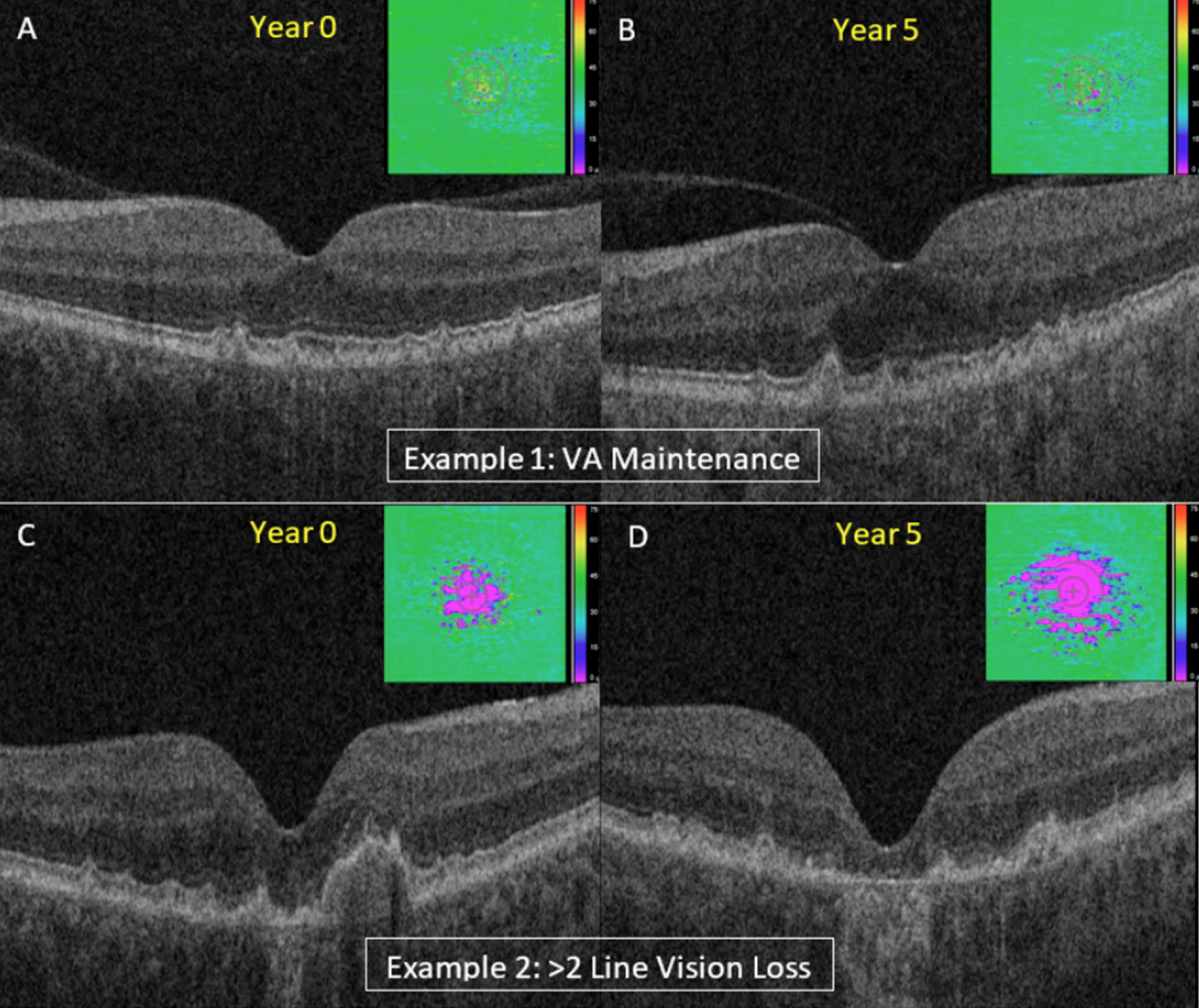The assessment of dry AMD disease burden with OCT have been enhanced by the increasing sophistication of today’s devices, but there’s still much to learn about potential correlations between external retinal structures such as ellipsoid zone (EZ) with visual acuity (VA) in dry AMD. In a new longitudinal five-year image analysis study, researchers aimed to investigate the relationship between EZ integrity (on SD-OCT) and VA. They found that EZ integrity could potentially detect early changes in dry AMD and be an indicator for predicting future functional outcomes.
VA in dry AMD was strongly linked to multiple EZ integrity parameters regardless of geographic atrophy status. Baseline EZ integrity parameters were also significantly associated with subsequent vision loss over time, even in eyes with excellent baseline VA, suggesting that quantitative OCT-based EZ integrity measures may be an objective biomarker that can show early changes in patients with dry AMD preceding a decline in VA and is overall clearly linked to function, according to the authors of this study.
 |
|
EZ integrity as an imaging biomarker may provide critical support to clinicians to identify dry AMD patients who may be ideal candidates for therapeutic intervention. These images from the study show two subjects with varying EZ attenuation and different progressions of VA changes at year five. Photo: Yordi S, et al. J Pers Med. May 19, 2024. Click image to enlarge. |
A significant correlation was observed between baseline percentage area of partial and complete EZ attenuation five-year VA values, which is consistent with previous studies. Further, the current analysis also showed a significant inverse correlation between the baseline central EZ-RPE thickness and the five-year VA.
“These results could enable the use of partial/total EZ attenuation and EZ-RPE thickness as objective indications of disease severity and potentially predict future functional outcomes in patients with dry AMD,” the researchers explained in their journal article on the work.
“Additionally, the current study showed a significant correlation between the EZ intensity index and VA. EZ intensity (i.e., EZ reflectivity brightness) is another quantitative OCT-based feature that has been examined as a potential biomarker of risk for the progression of dry AMD. The correlation of EZ intensity with VA places emphasis on the future exploration of this biomarker as a potential endpoint for clinical trials, although there are potentially greater challenges in utilizing this measure compared to the EZ-RPE thickness measures based on image variability,” they wrote.
The significant associations between EZ integrity parameters on SD-OCT with both visual function and future vision loss provide a critical opportunity to potentially risk-stratify eyes with dry AMD and enrich clinical trials for eyes at the greatest risk for functional change, the authors concluded. “This also presents a critical structure-function relationship that supports EZ integrity and photoreceptor preservation as an appropriate end point for future therapeutics. Finally, the use of EZ integrity as an imaging biomarker may provide critical support to clinicians to identify those patients who may be ideal candidates for therapeutic intervention.”
Yordi S, Cakir Y, Kalra G, et al. Ellipsoid zone integrity and visual function in dry age-related macular degeneration. J Pers Med. May 19, 2024. [Epub ahead of print.] |


